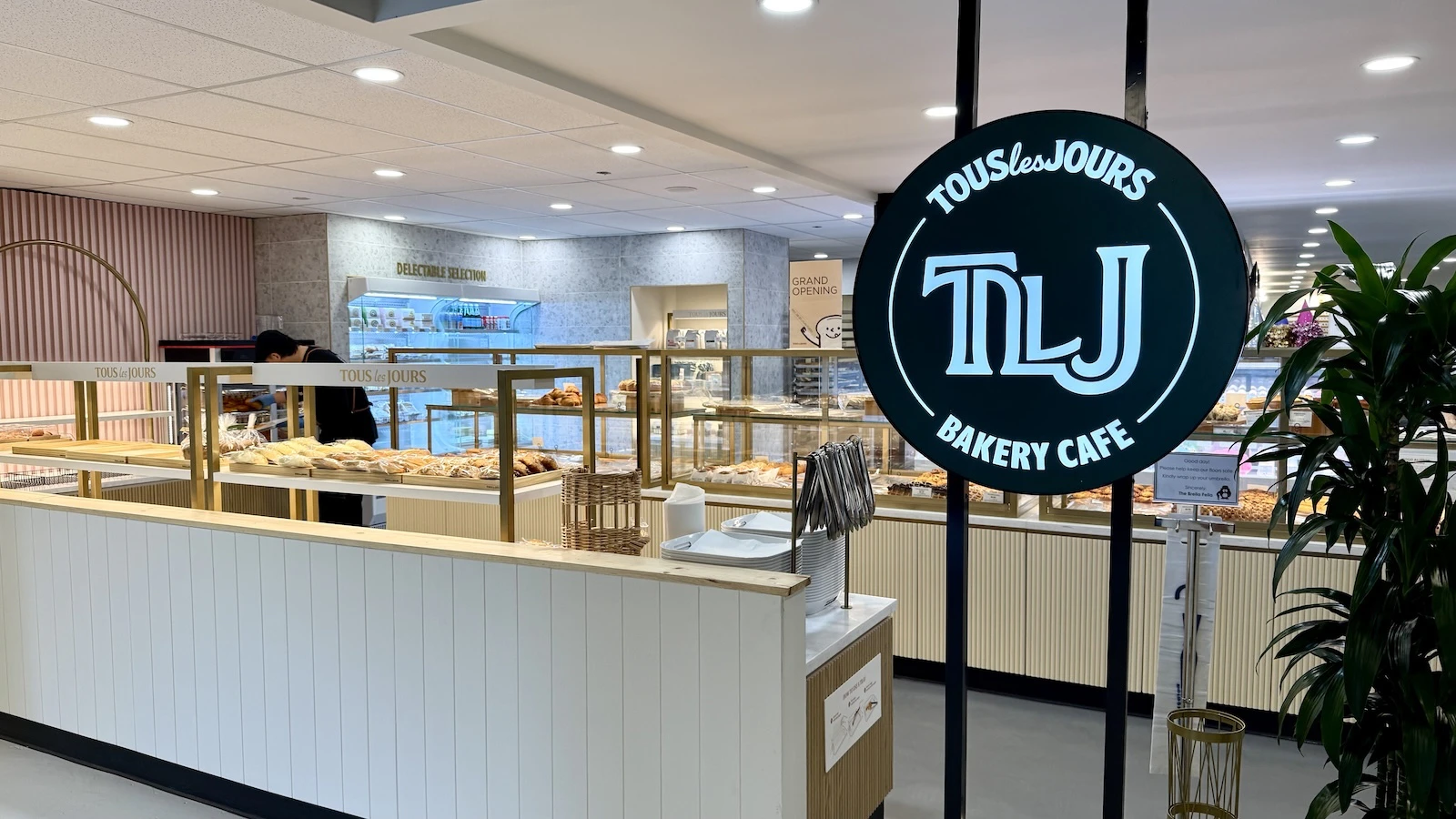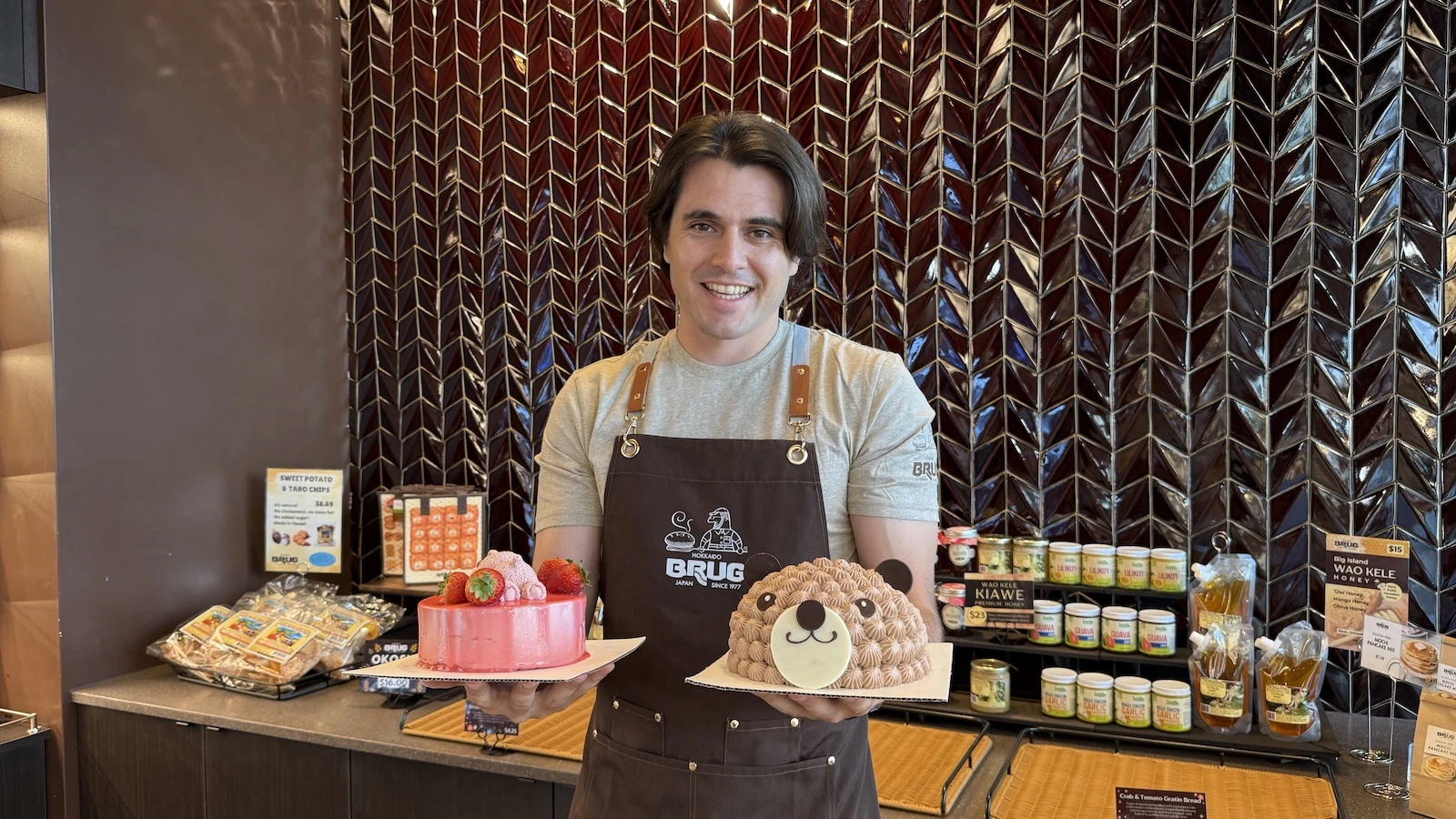You won’t find the usual range of dishes, such as pad thai, at this new Thai restaurant in Chinatown.
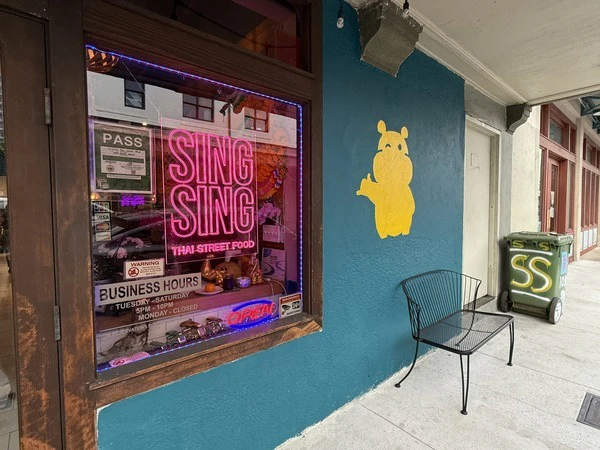
One of chef and owner Palm Amatawet’s goals in opening SingSing Thai Street Food is to introduce Hawaii to cuisine you’d find at restaurants in Thailand.
“The only dish [from our menu] you can find in other Thai restaurants is chicken satay,” he says. “Most of our menu items are unique.”

Pinks and purples punctuate the lively interior. You’ll notice silhouettes of Moo Deng, the iconic baby hippo from Thailand who has become a viral sensation. The picture on the wall was taken in Thailand’s Chinatown in Bangkok, according to Pui Amatawet, who co-owns the eatery with Palm.
Sing Sing in Thai means "something fresh, something new,” Pui says. “It’s like a slang.
“Thai food here in Hawaii includes pad Thai, drunken noodles and curry, but we have more than that,” she adds. “If you go to Thailand, we have all kinds of food — not only the things you know in Hawaii or America.”
Palm describes the restaurant’s cuisine as traditional Thai street food but modernized with premium ingredients. Plates are designed to share, family-style, and most groups order an appetizer, salad and several main dishes to try.

Popular appetizers include Thai beef carpaccio ($15), Angus beef satay ($14) and raw ahi betel wrap ($14). The beef carpaccio is the top seller, according to Palm. The thinly sliced beef is topped with peanuts, cilantro, chili and fried garlic, with a lime on the side. The fish sauce flavor is strong and this dish packs some heat, but the combination of complex flavors is delightful.
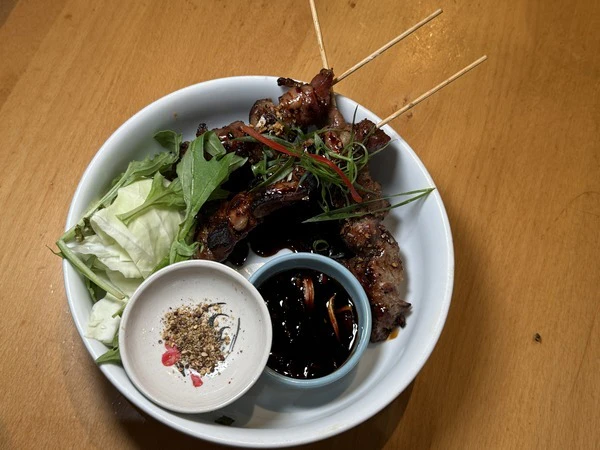
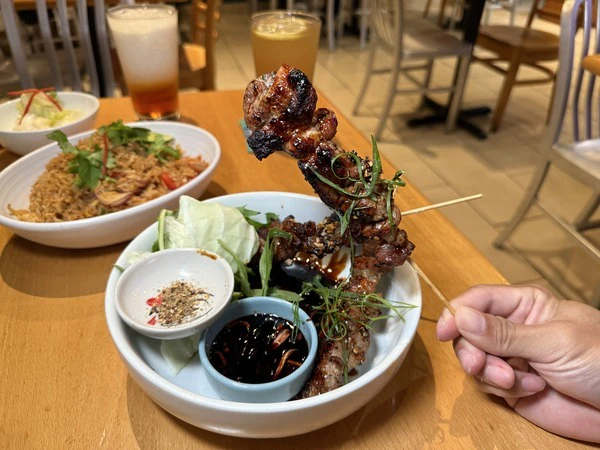
The beef satay, marinated in house spices and served with sambal and chili salt for dipping, is an absolute must. You can dip the skewers into the sambal first, then salt to finish, but meat has enough flavor on its own.
“People don’t think this dish is a Thai food,” Palm says. “It comes from north Thailand, close to Burma. People think it’s a Chinese food.”

The ahi wrap is the eatery’s twist on poke, but it’s spicier and features flavors that are dominant in Thai salads — sambal, shallots, basil, chili, lime and lemongrass.
Palm notes that two soups — tom yum koong and tom kha gai — are currently on the menu due to popular demand, but they may be temporary additions.
“I didn’t have soup on the menu, but we had so many requests for tom yum,” he says. “When people start to understand our concept a little bit more, I might take the soup out to put in something different. We try to educate people that Thai food is more than tom kha.”
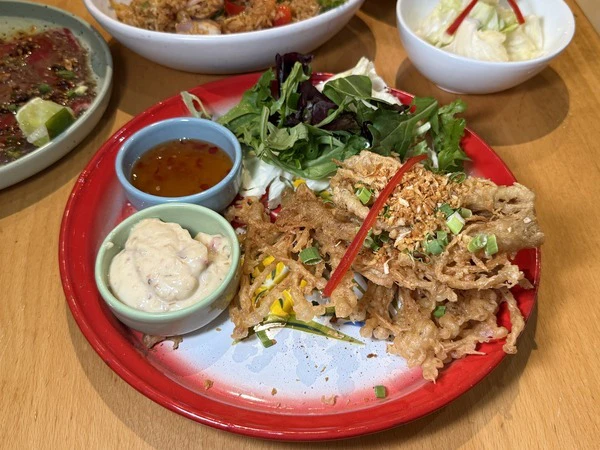
I wouldn’t think to find a tantalizing tempura dish at a Thai eatery, but the mushroom tempura ($12) proved me wrong. The ultra-crispy morsels came with a smoked tuna relish dip and sweet chili sauce. Each bite delivered a satisfying crunch.
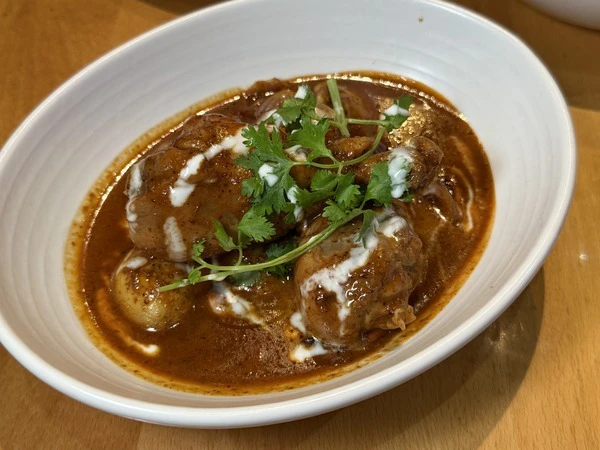
While the entrée selection includes dishes ranging from crispy whole fish (market price) and chili soft shell crab ($22) to Issan pork chops ($19) and crispy lemongrass chicken ($17), we had to try the housemade curry. Massaman curry of chicken ($20) — coconut, curry, peanuts, baby potatoes and shallots — is a safe choice if you can’t handle a lot of spice, as the nuttiness, spice and subtle sweetness from the coconut blends well together. Palm recommends the paneng of beef cheek ($22).
“We use a unique cut of beef that’s really nice and tender; it melts in your mouth,” he says. “It’s really different from other curries.”
While all dishes contain some spice, they can be toned down to suit your heat tolerance.

Save room for desserts like young coconut jelly ($9) — complete with Moo Deng praline and ice cream — and Thai tea caramel custard ($9), served with caramel and coconut ice cream. These trendy treats are social media-friendly and pay homage to Moo Deng.
“The young coconut jelly dessert is the most popular; everyone wants to take a picture of the baby hippo,” Palm says.
The dessert features a bottom layer of coconut juice mixed with jelly, and a top layer of coconut milk with vanilla. The crowning glory is the bed of baked peanuts with a caramelized topping served under the vanilla ice cream.
The restaurant is currently BYOB, as it’s waiting for its liquor license to be approved. After the holidays, the hours will extend with the addition of a lunch menu, according to Palm.
Kelli Shiroma Braiotta can be reached at kelli@alohastatedaily.com.



